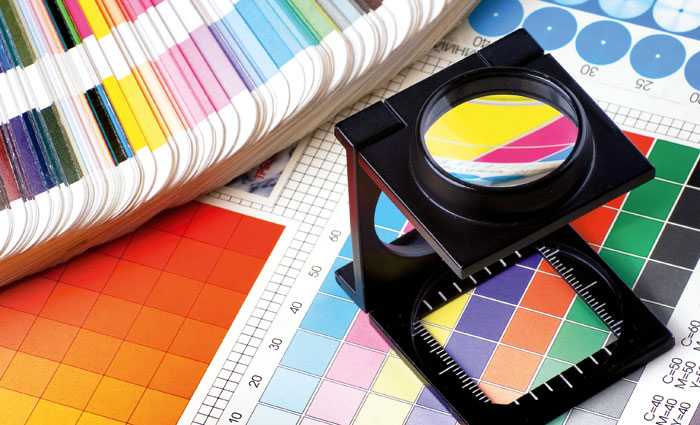

Digital is schizophrenic: it can be dry or liquid toner, or inkjet using water, solvent, or UV. There is plenty to consider to master this art.
Paper
In digital printing, paper is part of the system. There is no such thing as ‘plain paper’. Choose a paper that has been tested and approved for the digital printing system that will be used, or you may encounter poor results. A test run or proof may be the best way to determine if the paper is the best choice. Once you know which system will be used, get a list of approved papers, usually posted on a supplier websites.
For dry toner printers, the temperature and moisture content of the paper are critical for the paper to receive the correct electrostatic charge during printing process, which will ensure proper image transfer and toner adhesion. Paper used in digital presses, printers and copiers must be properly acclimated for best results.
Digital papers for dry toner must be able to withstand the high heat created during the image fusion process. Liquid toners do not have this issue but may require special coatings to assist in ink adhesion. Newly announced liquid toner printers may not require coated or treated paper. Always check first.
Paper manufacturers are constantly developing paper stocks that are stronger and cleaner to help eliminate the picking problem that can occur with waterless inkjet technology. Fibres can be transferred to the printed areas, producing poor quality. Water-based inkjet printers usually deposit a spot of pre-coating as a base for the coloured inks.
Grain
The direction of the paper grain is critical for smooth operation. It also affects some finishing processes (especially folding). If the ink or toner image crosses the covers and spine, there could be cracking (although this is now less of a problem than ever before). Printing using the proper grain direction will help but a test is recommended. In digital printing, a proof is a run length of one so you will be able to see the actual effect of the design and the printing.
Colour
Make sure the printing system is calibrated and the correct ICC colour profile is used. Up-to-date colour profiles usually can be downloaded from an ICC archive maintained by the printing service. Proper calibration and use of the ICC colour profile appropriate for the specific RIP avoids excessive ink deposit and ensures accurate colour reproduction. Bleeding, mottling, banding and warping all can be linked to poor calibration and profiling. In inkjet printers, banding may also be caused my misdirected or clogged nozzles.
Spot colours
Well over 80% of all Pantone colours can be printed from CMYK. HP Indigo printers are capable of up to seven colours. The Kodak NexPress has a fifth toner station and can handle many special colours and effects.
Most newer digital printers have excellent software that makes some decisions for you. Designers who use RGB colour models are saved by automatic RGB-to-CMYK conversions, however, this is never recommended. Many workflows can also accept files profiled for offset litho for conversion, and this is also not good.
Frank Romano is professor emeritus at the Rochester Institute of Technology
Comment below to have your say on this story.
If you have a news story or tip-off, get in touch at editorial@sprinter.com.au.
Sign up to the Sprinter newsletter
